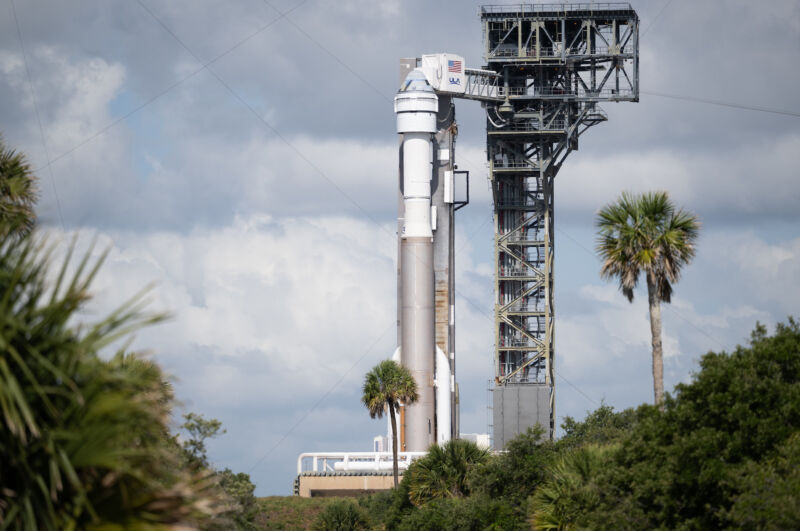
Enlarge / The Atlas V rocket and Starliner spacecraft on their launch pad Monday.
Astronauts Butch Wilmore and Suni Williams climbed into their seats inside Boeing’s Starliner spacecraft Monday night in Florida, but trouble with the capsule’s Atlas V rocket kept the commercial ship’s long-delayed crew test flight on the ground.
Around two hours before launch time, shortly after 8: 30 pm EDT (00: 30 UTC), United Launch Alliance’s launch team stopped the countdown. “The engineering team has evaluated, the vehicle is not in a configuration where we can proceed with flight today,” said Doug Lebo, ULA’s launch conductor.
The culprit was a misbehaving valve on the rocket’s Centaur upper stage, which has two RL10 engines fed by super-cold liquid hydrogen and liquid oxygen propellants.
“We saw a self-regulating valve on the LOX (liquid oxygen) side had a bit of a buzz; it was moving in a strange behavior,” said Steve Stich, NASA’s commercial crew program manager. “The flight rules had been laid out for this flight ahead of time. With the crew at the launch pad, the proper action was to scrub.”
The next opportunity to launch Starliner on its first crew test flight will be Friday night at 9 pm EDT (01: 00 UTC Saturday). NASA announced overnight that officials decided to skip a launch opportunity Tuesday night to allow engineers more time to study the valve problem and decide whether they need to replace it.
Work ahead
Everything else was going smoothly in the countdown Monday night. This mission will also be the first time astronauts have flown on ULA’s Atlas V rocket, which has logged 99 successful flights since 2002. It is the culmination of nearly a decade-and-a-half of development by Boeing, which has a $4.2 billion contract with NASA to ready Starliner for crew missions, then carry out six long-duration crew ferry flights to and from the International Space Station.
This crew test flight will last at least eight days, taking Wilmore and Williams to the space station to verify Starliner’s readiness for operational missions. Once Starliner flies, NASA will have two human-rated spacecraft on contract. SpaceX’s Crew Dragon has been in service since 2020.
When officials scrubbed Monday night’s launch attempt, Wilmore and Williams were already aboard the Starliner spacecraft on top of the Atlas V rocket at Cape Canaveral Space Force Station, Florida. The Boeing and ULA support team helped them out of the capsule and drove them back to crew quarters at the nearby Kennedy Space Center to wait for the next launch attempt.
“I promised Butch and Suni a boring evening,” said Tory Bruno, ULA’s CEO. “I didn’t mean for it to be quite this boring, but we’re going to follow our rules, and we’re going to make sure that the crew is safe.”
When the next launch attempt actually occurs depends on whether ULA engineers determine they can resolve the problem without rolling the Atlas V rocket back to its hangar for repairs.
The valve in question vents gas from the liquid oxygen tank on the Centaur upper stage to maintain the tank at proper pressures. This is important for two reasons. The tank needs to be at the correct pressure for the RL10 engines to receive propellant during the flight, and the Centaur upper stage itself has ultra-thin walls to reduce weight, and requires pressure to maintain structural integrity.